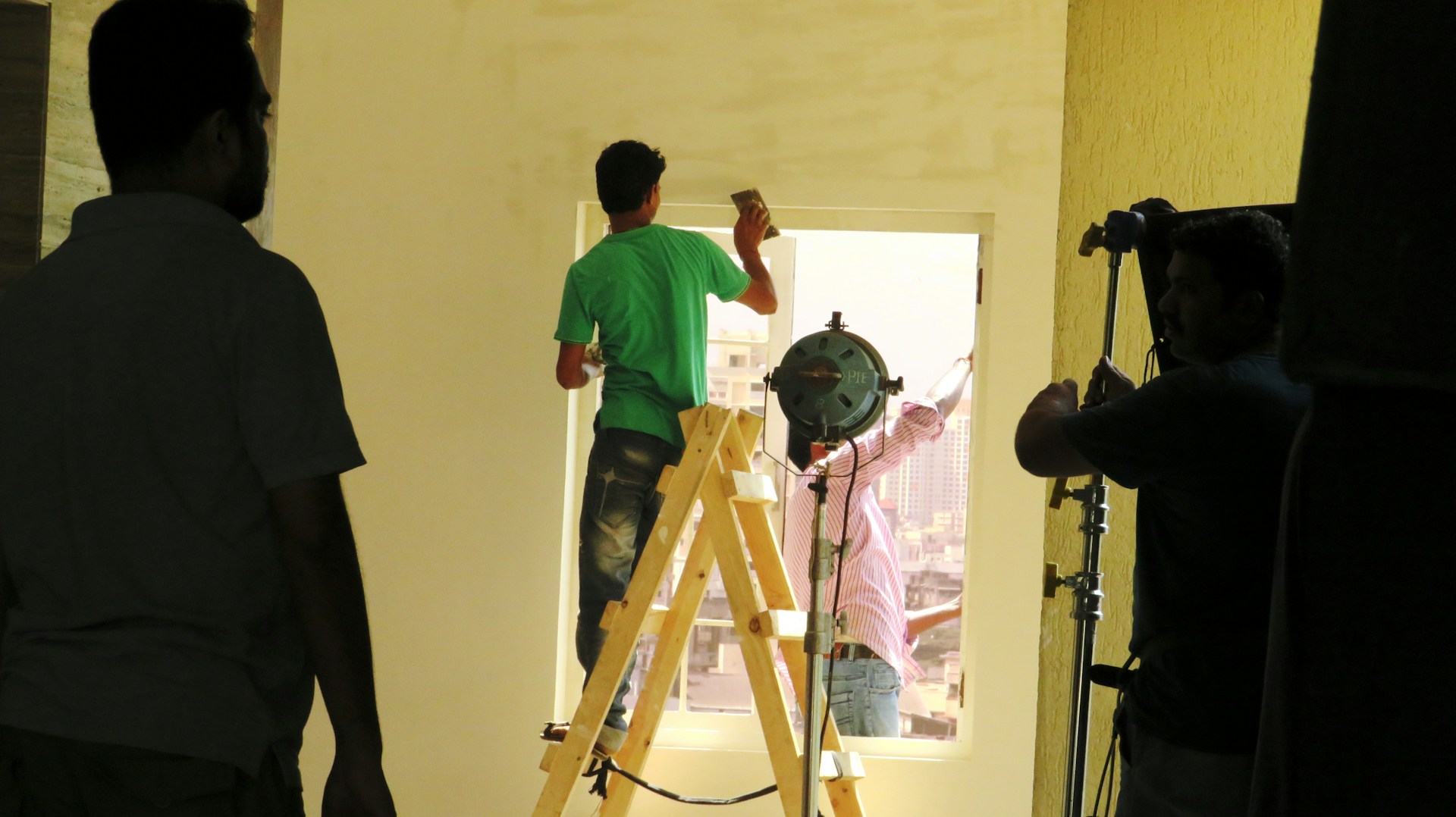
A new coat of exterior paint can completely refresh your home’s look while making a considerable impact on its market value. Professional painters know that the right colors, proper application methods, and perfect timing are key to enhancing your property’s curb appeal—not just another average finish.
This step-by-step guide will reveal expert tips for exterior painting, ensuring results that boost home value and create a lasting impression.
From choosing the ideal color palette to applying paint like a pro, you’ll discover how to maximize your investment and elevate your home’s exterior to professional standards.
Planning Your Exterior Paint Project
Assessing Your Home’s Current Condition
Before diving into color selection, conduct a thorough inspection of your home’s exterior surfaces. Look for peeling paint, cracks, wood rot, or mildew that could affect the final result. Address these issues first to ensure your new paint job will last for years to come.
Check the condition of your siding, trim, and any architectural details. Different materials may require specific preparation techniques or primer types. Document any areas that need special attention so you can plan accordingly.
Choosing the Right Season for Exterior Painting
Weather conditions play a crucial role in paint adhesion and drying time. Spring and fall typically offer the most favorable conditions, with moderate temperatures and lower humidity levels. Avoid painting during extreme heat, cold, or when rain is forecast within 24 hours of application.
Temperature fluctuations can cause paint to expand and contract, leading to cracking or poor adhesion. Aim for temperatures between 50-85°F for optimal results.
Color Selection Strategies for Maximum Curb Appeal
Understanding Color Psychology and Neighborhood Harmony
The colors you choose should complement your home’s architectural style while considering the surrounding environment. Traditional homes often benefit from classic color combinations, while contemporary structures can handle bolder choices.
Research your neighborhood’s color trends without copying them exactly. You want your home to stand out positively while maintaining harmony with nearby properties. Consider factors like landscaping, roof color, and permanent exterior features when making your selection.
Popular Color Combinations That Increase Home Value
Neutral colors consistently perform well in terms of broad appeal and resale value. Consider these proven combinations:
- Warm grays with crisp white trim
- Navy blue with white or cream accents
- Sage green with natural wood tones
- Classic white with black shutters and trim
Remember that darker colors tend to fade faster and may absorb more heat, potentially affecting your home’s energy efficiency.
Testing Colors Before Committing
Purchase sample sizes of your top color choices and apply them to different areas of your home’s exterior. Observe how they look at various times of day and under different lighting conditions. Colors can appear dramatically different in morning sunlight versus evening shadows.
Apply samples to both sunny and shaded areas to get a complete picture of how the color will perform across your entire home.
Surface Preparation Techniques
Cleaning and Power Washing
Proper surface preparation accounts for 80% of a successful paint job. Start by thoroughly cleaning all surfaces with a pressure washer, working from top to bottom. Allow 24-48 hours for complete drying before proceeding.
Remove any mildew, dirt, or chalky residue that could prevent proper paint adhesion. Use appropriate cleaning solutions for stubborn stains, and always follow manufacturer guidelines for pressure settings to avoid damage.
Scraping and Sanding
Remove all loose or peeling paint using scrapers and sandpaper. This step requires patience but is essential for a professional-looking finish. Pay special attention to areas around windows, doors, and trim where paint failure commonly occurs.
Sand glossy surfaces lightly to create better adhesion for the new paint. Use appropriate grit sandpaper for your specific surface material.
Priming for Long-Lasting Results
Never skip the primer, especially when changing colors dramatically or painting over stained surfaces. High-quality primer creates a uniform base that helps your topcoat adhere properly and achieve true color.
Choose a primer specifically formulated for your surface material and intended topcoat. Oil-based primers work well for bleeding stains, while latex primers are suitable for most standard applications.
Professional Application Methods
Selecting the Right Tools and Materials
Invest in high-quality brushes, rollers, and exterior paint designed for your local climate conditions. Cheap tools often leave visible marks and don’t hold paint well, leading to uneven coverage and poor results.
For most exterior surfaces, a combination of brush and roller work provides the best coverage. Use brushes for detailed work and rollers for large, flat areas.
Proper Painting Techniques
Apply the paint in thin, even coats rather than trying to cover everything in one thick application. This approach prevents drips, ensures better adhesion, and creates a more durable finish.
Work in sections small enough to maintain a wet edge, preventing lap marks. Start with trim and detail work, then move to larger surfaces. Always follow the manufacturer’s recommended coverage rates and drying times between coats.
Managing Weather Conditions
Monitor weather forecasts closely and plan your painting schedule accordingly. Avoid painting in direct sunlight when possible, as rapid drying can cause brush marks and uneven coverage.
High humidity can extend drying times and affect paint performance. Use a hygrometer to monitor conditions and adjust your schedule as needed.
Finishing Touches and Maintenance
Adding Architectural Details
Consider adding or refreshing architectural elements like shutters, trim, or decorative molding to enhance your home’s character. These features provide opportunities for accent colors and can significantly boost curb appeal.
Ensure all hardware is properly maintained and consider updating fixtures like porch lights or house numbers to complement your new paint scheme.
Protecting Your Investment
Apply caulk to all joints and seams to prevent moisture infiltration. Use high-quality exterior caulk that will remain flexible as your home expands and contracts with temperature changes.
Clean your painting tools thoroughly and store leftover paint properly for future touch-ups. Label containers with the specific areas where each color was used for easy reference.
Maximizing Your Home’s Market Value
Professional vs. DIY Considerations
While DIY painting can save money upfront, professional painters bring expertise, efficiency, and warranty protection. Consider your skill level, available time, and the complexity of your project when making this decision.
Professional painters have access to commercial-grade equipment and materials that may not be available to consumers. They also understand local building codes and can identify potential issues before they become problems.
Long-Term Value Benefits
A quality exterior paint job can increase your home’s value by 2-5% while providing years of protection against weather damage. The investment in premium materials and proper application techniques pays dividends through extended paint life and reduced maintenance costs.
Regular maintenance, including annual inspections and prompt touch-ups, will maximize the lifespan of your paint job and protect your investment.
Transform Your Home’s Appearance Today
Exterior painting represents one of the most cost-effective ways to enhance your home’s curb appeal and increase its market value. By following these professional techniques and investing in quality materials, you can achieve results that will last for years while making your home the standout property in your neighborhood.
Remember that proper preparation, quality materials, and attention to detail are the foundations of any successful exterior paint project.
Take time to plan carefully, and don’t rush the process. Your patience and effort will be rewarded with a beautiful, long-lasting finish that enhances your home’s appeal and protects your investment.
For complex projects or when you want guaranteed professional results, consider consulting with experienced exterior painting contractors at https://www.mcpainting1.com/. They can provide expertise and ensure optimal outcomes for your specific situation.
Subscribe To Get Update Latest Blog Post
No Credit Card Required









